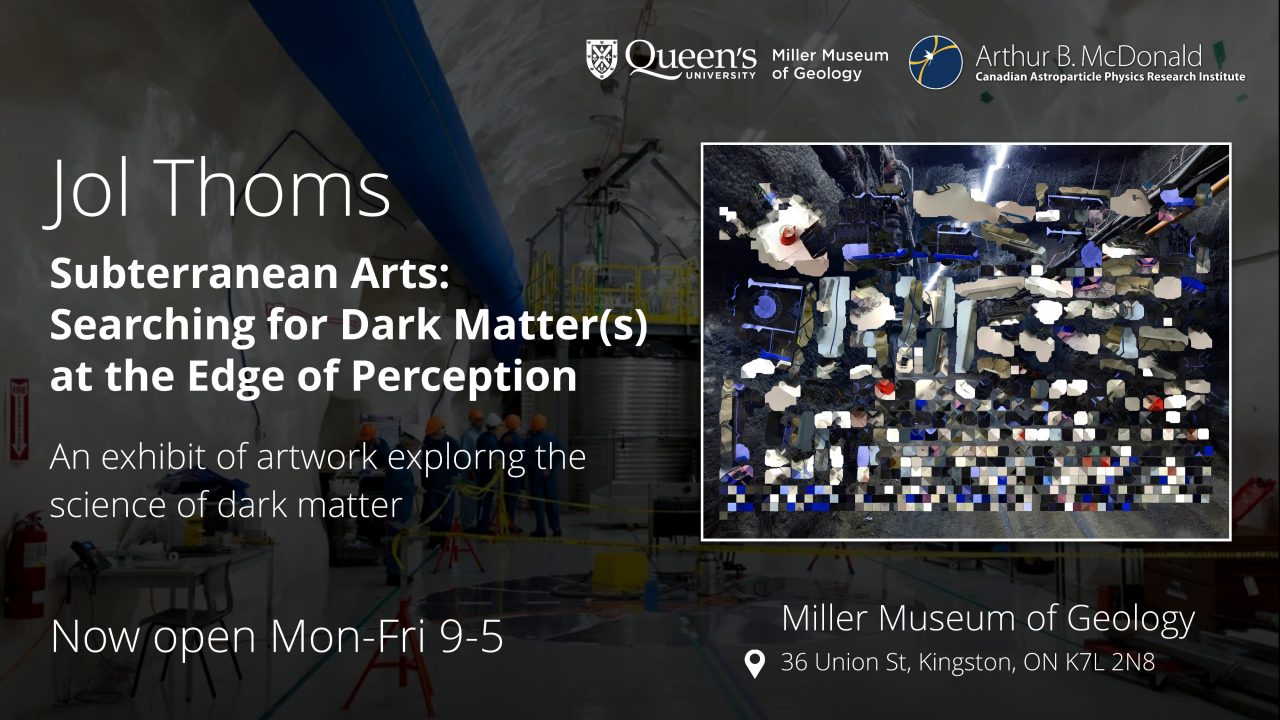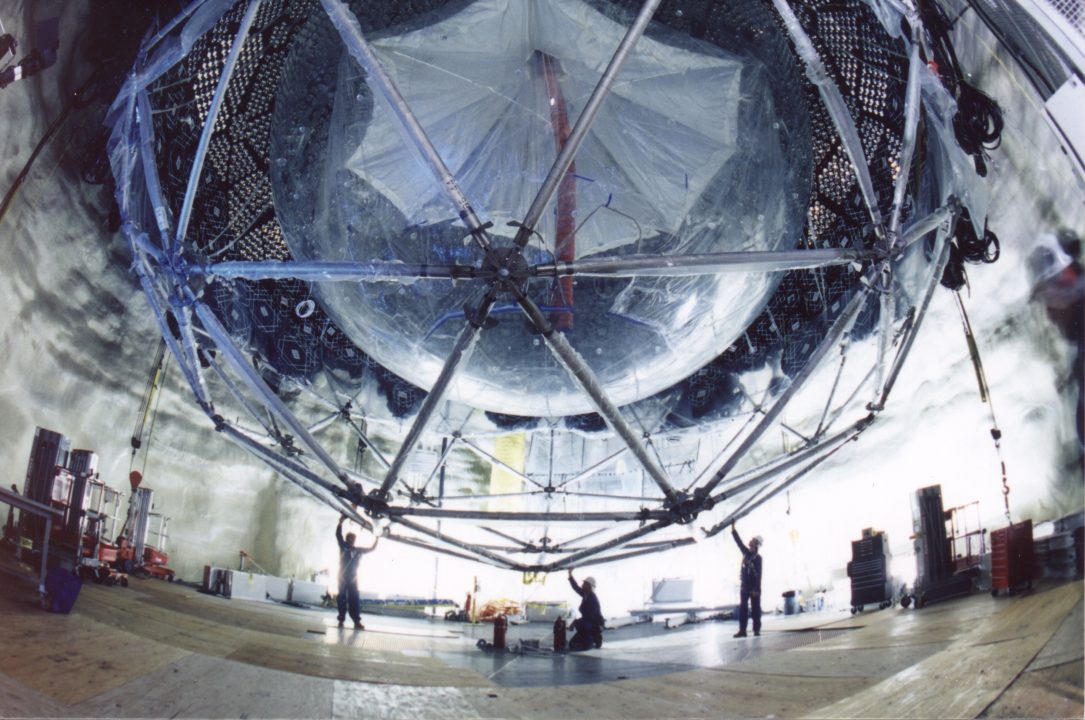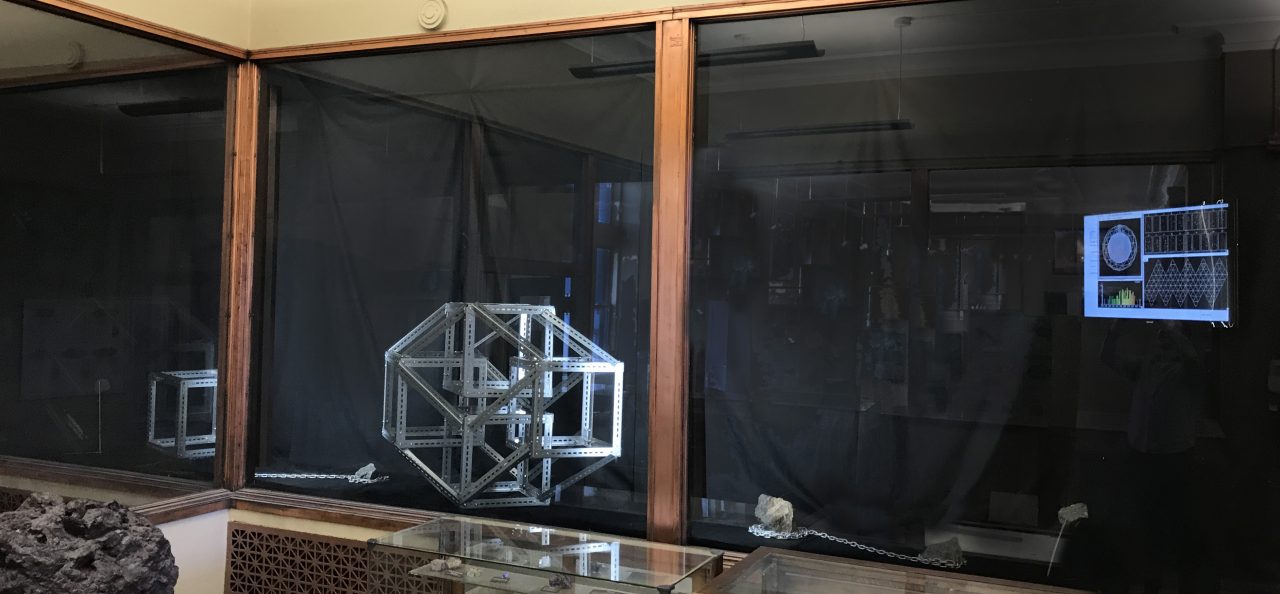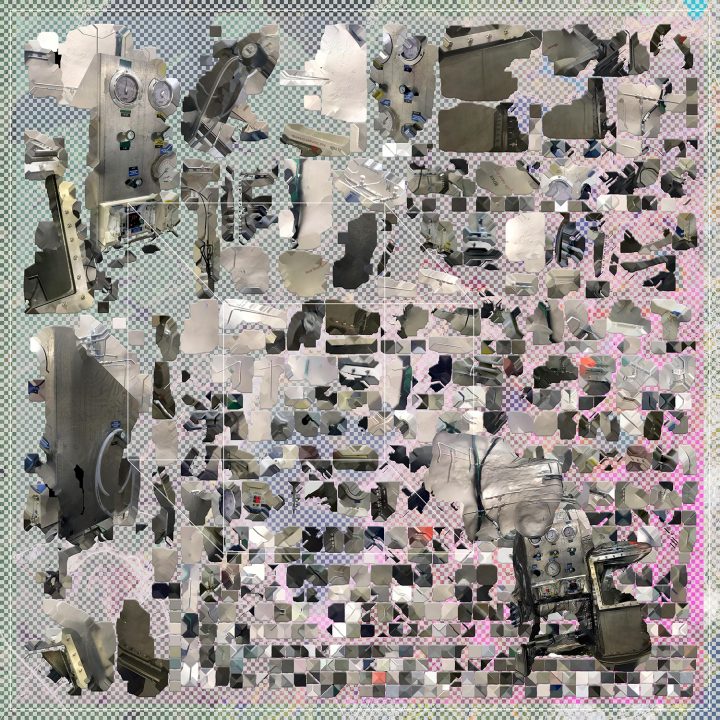News & Events
February 10, 2025
Art and Dark Matter exhibit closing soon!

A poster for the Jol Thoms art exhibition titled "Subterranean Art: Searching for Dark Matter at the Edge of Perception" featuring one of the artists artworks which looks like a mosaic of images from SNOLAB.
February is your last chance to see the dark matter research inspired exhibit by Jol Thoms at the Miller Museum of Geology. The exhibit will be on display in the main foyer of Miller Hall, Mon-Fri, between 9 am and 5 pm until the end of the month.
Jol Thoms, a Canadian-born, UK-based artist, educator, and sound designer, brings a unique perspective to the intersection of arts and sciences. In 2021, he was one of four artists invited to an art and science residency led by The Arthur B. McDonald Canadian Astroparticle Physics Research Institute, The Agnes Etherington Art Centre at Queen’s University, and SNOLAB, Canada’s premiere underground particle physics research laboratory. Thoms and his fellow artists had the opportunity to visit the Queen’s physics labs, meet with researchers, and travel to Sudbury to visit SNOLAB, where they witnessed astroparticle physics experiments operating 2km beneath the Earth’s surface. Over the next six months, Thoms created a selection of artwork for the travelling exhibition DRIFT: Art and Dark Matter, showcased in this exhibit.

Astroparticle physicists are on a quest to answer some of the most fundamental questions about the physical universe. What is this theoretical dark matter, the mysterious substance that seems to make up a significant portion of mass in the universe? Why is our observable universe made of matter and not anti-matter? What are the specific properties of neutrinos, and what can they tell us about the early universe?
To detect these extremely elusive particles, experiments must be well shielded to filter out the natural radiative noise in Earth’s atmosphere. The most effective way of shielding a particle detector is to install it deep underground, where the dense rock above the lab serves as a primary filter.

Jol Thom’s artistic research often intersects with scientific research. He is interested in how landscape becomes an integral part of the laboratory. In this exhibition, Thoms borrows rocks from the Sudbury area, combining them with structures reminiscent of laboratory components. In a multi-dimensional exploration of the lab, he asks who or what is making the science possible. Two unique video pieces accompany the installation. In the display case, “Drift Decay Portrait (SNO+)” shows a recording of the SNO+ neutrino detector taken while Thoms and other artists walked on the floor of the detector chamber. The experiment is sensitive enough to pick up radiation from their bodies, which can be seen as signals on the detector monitor that he recorded.

Thoms also took extensive digital 3D scans of various laboratory areas and the mine drift. These scans are flattened and layered with other images, making poetic reference to the materiality of the research and the multi-dimensionality of the site’s plural identities. Thoms’ work is explicit in its subject matter, while ambiguous in its message, encouraging viewers to broaden their conception of what scientific research is or could be.
The exhibit is now open to the public at the Miller Museum of Geology from Monday – Friday, 9 am – 5 pm or by special appointment. The exhibit will be on display until the end of February.
